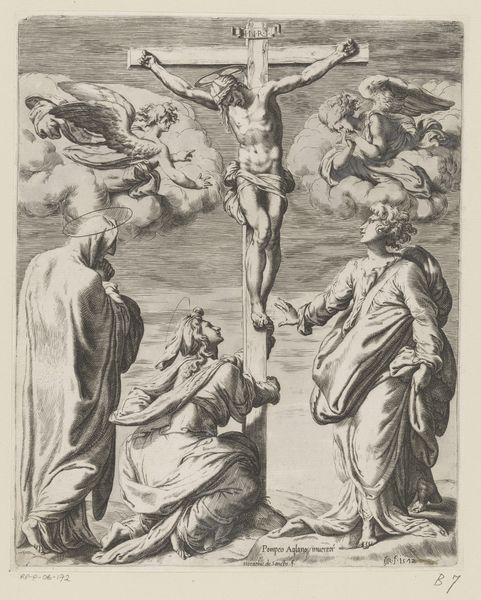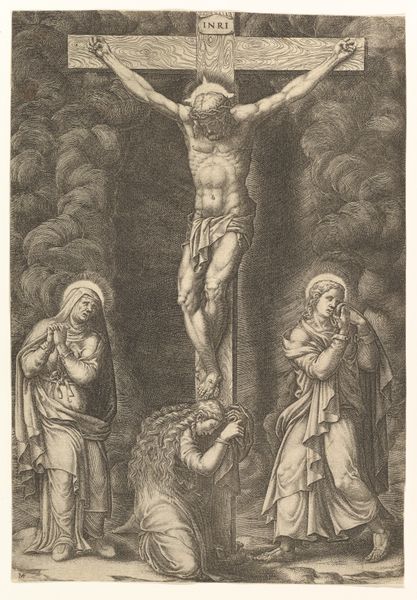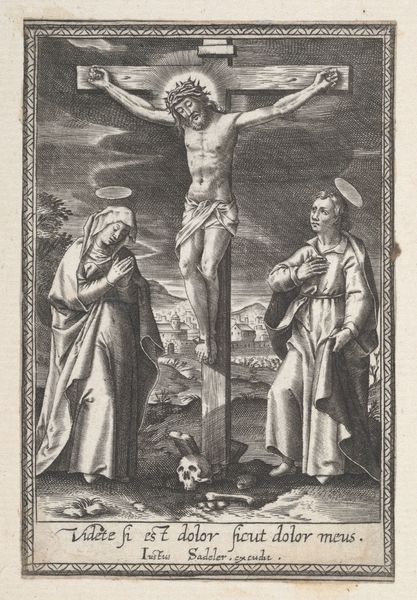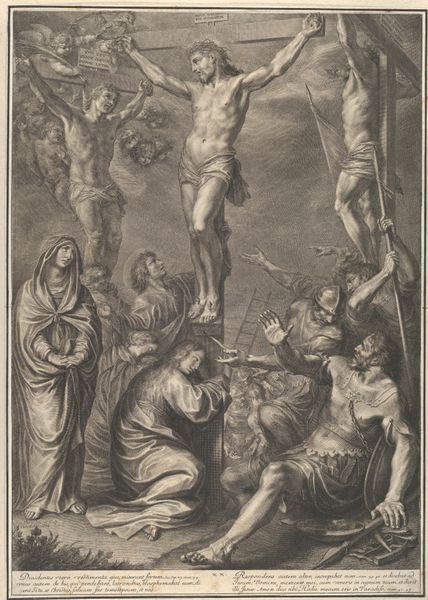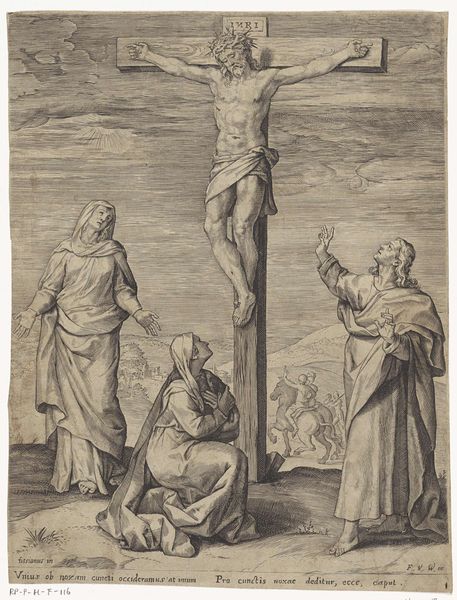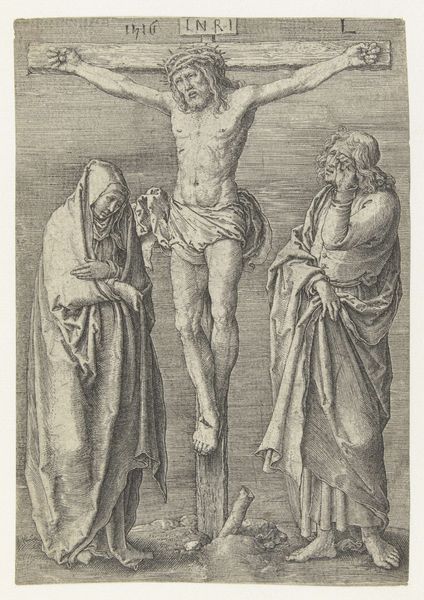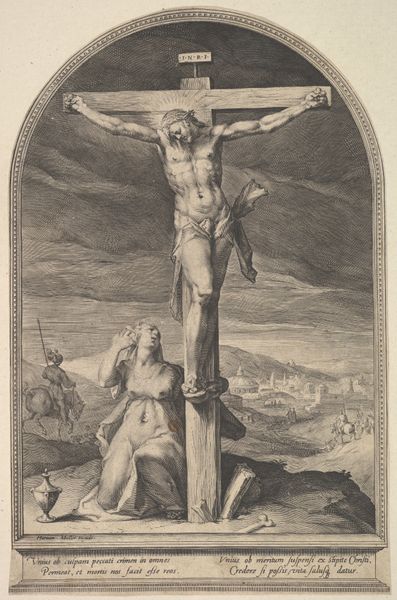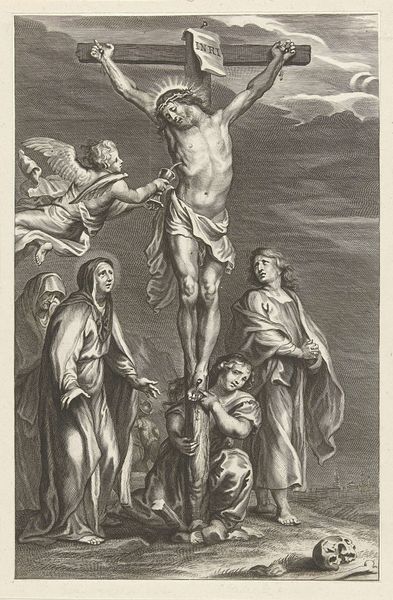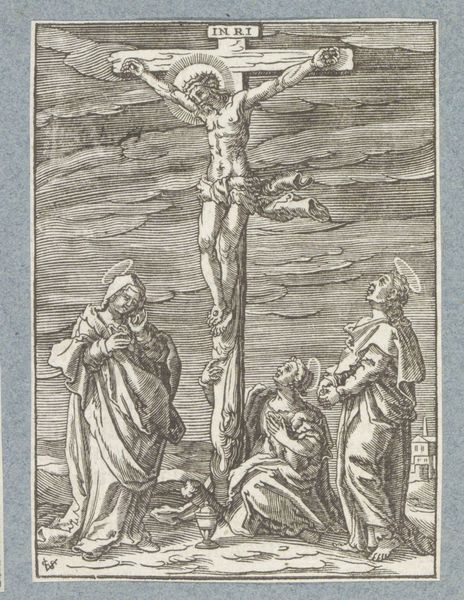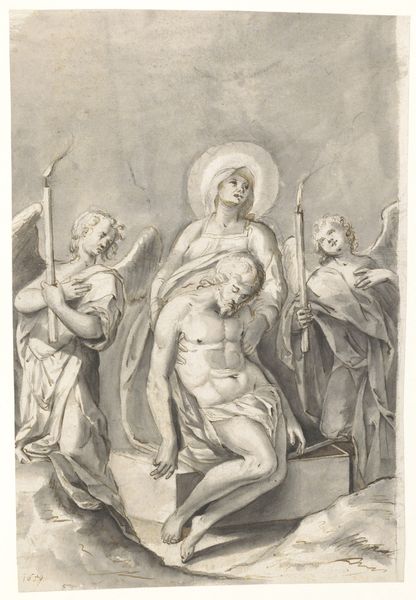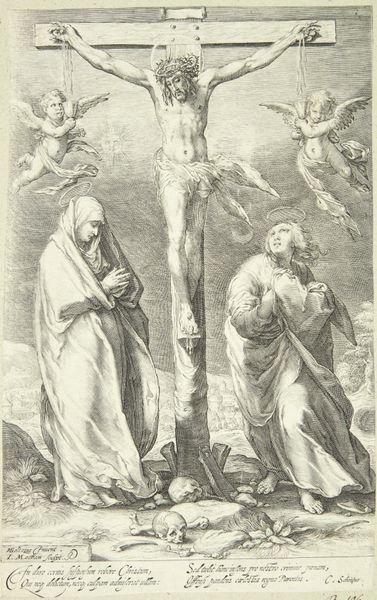
print, intaglio, engraving
# print
#
intaglio
#
landscape
#
figuration
#
pencil drawing
#
ink drawing experimentation
#
pen-ink sketch
#
history-painting
#
engraving
Dimensions: height 261 mm, width 210 mm
Copyright: Rijks Museum: Open Domain
This is Pieter Maes’s "Crucifixion of Christ," made sometime in the 16th century. It’s an engraving, meaning the image was incised into a metal plate, probably copper. The artist would have used a tool called a burin to cut lines into the surface, creating grooves that hold ink. Consider the labor involved. Each line had to be carefully planned and executed. The varying depth and density of the lines create the illusion of light and shadow, and give form to the figures and landscape. It’s a time-consuming process, requiring considerable skill and patience. And it’s also a process of reproduction. Once the plate is made, multiple impressions can be printed. This speaks to the social context of the time. Prints made religious imagery more widely accessible, contributing to the spread of religious ideas and devotion. By understanding the material and making of the engraving, we gain insight into its cultural significance, beyond the image represented.
Comments
No comments
Be the first to comment and join the conversation on the ultimate creative platform.
